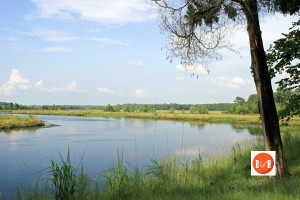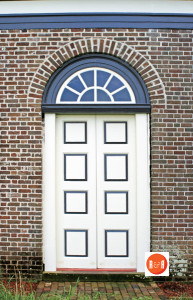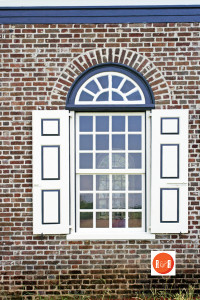Pompion Lane, Huger, S.C.
City Directories and History: The Cooper River Historic District, which is a 30,020-acre section of the region centered along both branches of the Cooper River, is a remarkably intact historic and cultural landscape. In the mid-eighteenth century, the Cooper River served not only as a principal transportation route for plantation goods, services and people, but also played a vital role in the successful production of rice. In the

nineteenth and early twentieth centuries most of the plantations in the district were acquired by wealthy Northerners looking for a warmer climate in which they could create hunting preserves for their own pleasure and leisure-time activities. These new owners left their mark on the landscape by building stately new residences but they also played an important role in preserving the earlier landscape. Many historic buildings, structures, and objects from the eighteenth, nineteenth, and twentieth centuries are still standing, and archaeological remains of settlements, machines, barns, and other structures that supported agricultural activity are generally intact. In addition, landscape features such as rice fields, banks, canals, dams, reservoirs or reserves, causeways, roads, avenues, upland fields, fence lines, and cemeteries – many of them present on eighteenth and early nineteenth century plats and maps – can be seen on the ground today. Numerous outbuildings are also included with several of the properties. Listed in the National Register February 5, 2003. [Courtesy of the SC Dept. of Archives and History]
Click here for additional information on this property as shown in the National Register Nomination.
The chapel was constructed in 1765 under the architect, Zachariah Villepontaux and builder, William Axson.
Pompion (“Punkin”) Hill Chapel, parish church for the plantations in this area, later became the Chapel of Ease to the combined parishes of St. Thomas and St. Denis, the Huguenot community of the Orange Quarter. “The first Church built on this spot, was in 1703, built of cypress by the private subscriptions of the Parishioners, and the liberal assistance of Sir Nathaniel Johnson, Governor.” It stands on a high bluff, rising abruptly from the river bed, and is said to take its name from the hill on which it stands. The unusual name, according to Mrs. Mclver, author of the History of Mount Pleasant, is an old Spanish word for pumpkin.
Dr. Irving says it was the first Episcopal church in the province erected out of the city of Charleston, but Mrs. Stoney refutes this by saying that Judge Smith proved it to be junior to that at Goose Creek. The present chapel at Pompion Hill was built in 1766 and has an unusual interior arrangement. The high, carved cedarwood pulpit is against the opposite wall from the chancel and on that side “high brown wooden pews stand on the brick floor. These were for the colored worshipers. White pews for white worshipers are on a plank floor a step above the brick.”
(Information from: Names in South Carolina by C.H. Neuffer, Published by the S.C. Dept. of English, USC)
Stay Connected
Explore history, houses, and stories across S.C. Your membership provides you with updates on regional topics, information on historic research, preservation, and monthly feature articles. But remember R&R wants to hear from you and assist in preserving your own family genealogy and memorabilia.
Visit the Southern Queries – Forum to receive assistance in answering questions, discuss genealogy, and enjoy exploring preservation topics with other members. Also listed are several history and genealogical researchers for hire.
User comments welcome — post at the bottom of this page.
Please enjoy this structure and all those listed in Roots and Recall. But remember each is private property. So view them from a distance or from a public area such as the sidewalk or public road.
Do you have information to share and preserve? Family, school, church, or other older photos and stories are welcome. Send them digitally through the “Share Your Story” link, so they too might be posted on Roots and Recall.
Thanks!
IMAGE GALLERY via photographer Bill Segars – 2006
- Ann L. Helms – Photo
- Ann L. Helms – Photo
















